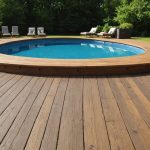Understanding the Unique Characteristics of Mid-Century Modern Homes
Mid-Century Modern homes are celebrated for their distinctive design elements and aesthetics. These homes, often featuring clean lines, open floor plans, and large windows, embrace simplicity and functionality. Key architectural features include the use of post-and-beam structures that allow for vast interior spaces without the need for interior load-bearing walls. This style encourages a seamless connection between the indoor and outdoor environments, often incorporating natural elements like wood and stone.
When renovating Mid-Century Modern homes, preserving the architectural integrity is crucial. This means respecting the original design principles and materials while updating the home. It’s essential to retain features like the original wood panelling, authentic fixtures, and minimalist built-in furniture. Preservation extends to the landscape surrounding the home, as outdoor spaces were considered extensions of the interior.
Sujet a lire : Exploring the Link Between Electrical Wiring Age and Home Insurance Costs in Liverpool
Design influences budget considerations significantly. Mid-Century Modern renovations can escalate in cost if one opts for genuine materials and craftsmanship. However, creative solutions can help maintain an authentic look while adhering to a budget. For instance, sourcing vintage pieces or opting for modern reproductions can be cost-effective alternatives. Discussing these nuances helps homeowners make informed decisions that honour both the past and their financial constraints.
Setting a Realistic Renovation Budget
Creating a comprehensive renovation budget is pivotal for any successful home makeover. Begin with a clear assessment of your financial standing, considering both savings and anticipated expenses. Establishing priorities assists in allocating funds efficiently. Include essential elements such as materials, labour, permits, and design costs.
En parallèle : Unlocking Rural Land Potential: The Impact of Comprehensive Soil Testing on Your Somerset Land Purchase Decision
One cannot overlook the common financial pitfalls during renovations. Overspending on unnecessary luxury items often strains the budget. Additionally, neglecting to set realistic goals can lead to incomplete projects due to insufficient funds. Maintaining financial discipline ensures the renovation stays aligned with your initial plan.
The vital aspect of any renovation is to allocate a contingency fund—ideally, about 10-20% of the total budget. This acts as a buffer for unexpected expenses like last-minute design changes or unforeseen structural issues. A well-prepared contingency fund can prevent potential financial crises and ensure project continuity.
Never underestimate the power of detailed financial planning. Regularly reviewing the budget aids in tracking progress and ensures costs remain manageable. The key lies in being both flexible and firm; being open to adjustments while adhering to your initial financial planning strategy.
Cost-Effective Materials for Mid-Century Modern Renovations
Embarking on a mid-century modern renovation can be both exciting and daunting, especially when considering sustainable materials and affordable options. This architectural style is defined by sleek lines, organic forms, and a seamless connection with nature, and choosing the right materials is crucial for maintaining its aesthetic.
Sustainable materials such as reclaimed wood and cork not only serve as quality choices but also help reduce environmental impact. Reclaimed wood offers a unique character reminiscent of the era while being eco-friendly. Similarly, cork is durable and provides exceptional insulation.
When it comes to affordable options, bamboo flooring and laminate countertops mimic mid-century charm without breaking the bank. Bamboo is fast-growing and renewable, making it a perfect eco-conscious choice. Laminate, on the other hand, offers a retro aesthetic with improved durability and versatility in design.
Comparing the costs and long-term benefits of these options reveals that initial investments in quality materials often lead to fewer repairs and replacements. Additionally, sourcing local materials can significantly cut costs while supporting Sussex businesses. Local suppliers might offer discounts or incentives, reducing transportation expenses and timeline delays.
Incorporating sustainable materials into mid-century modern renovations not only enhances aesthetic appeal but also ensures a project that is as friendly to the wallet as it is to the planet.
Finding and Working with Local Contractors
When considering a mid-century modern renovation, selecting the right local contractors is paramount. Begin by seeking professional services with proven renovation expertise in this architectural style. Conduct thorough reviews and request portfolios to ensure their past work aligns with your vision.
To choose the ideal contractor, initiate conversations about their experience with mid-century modern projects. It’s crucial to ask potential contractors insightful questions about budgets and timelines. For instance, enquire about their cost estimates and how they handle budgetary deviations. Understanding their approach to managing project timelines and overcoming potential delays will further establish their reliability.
Building a strong collaborative relationship with your contractor can lead to the best renovation results. Open communication is key; schedule regular meetings to discuss progress and address any concerns promptly. Being proactive in this relationship fosters trust and allows for adjustments if necessary, aligning their work with your specifications.
Moreover, ensure that your chosen contractor is well-versed in sourcing authentic or compatible materials, which is essential for maintaining the integrity of a mid-century modern design. By focusing on these aspects, you’ll be well-equipped to bring your renovation dream to life, efficiently and effectively.
Design Inspiration and Enhancements for Mid-Century Modern Homes
The allure of mid-century modern homes lies in their clean lines, functional design, and timeless appeal. To strike a balance between maintaining this classic aesthetic and updating functionality, one can start by exploring design ideas that subtly integrate contemporary features. Choosing furniture and decor items that echo the sleek forms and minimalism of the 1950s and 1960s can help preserve the style’s historical charm.
For instance, consider incorporating smart home technologies into a mid-century design setting. Smart thermostats can be artfully hidden within cabinetry, while voice-activated lighting adds modern convenience without intruding on the overall aesthetic. These style enhancements not only elevate the functionality of the space but also contribute to energy efficiency.
Moreover, aesthetic upgrades can involve the use of sustainable materials, which marry environmental consciousness with retro styling. Think about renewable woods or eco-friendly textiles in vintage-inspired designs that offer both style and sustainability.
For residents in Sussex looking to infuse some local character into mid-century homes, resources such as local architectural galleries or online platforms dedicated to the region’s mid-century heritage can provide valuable insights. By leveraging these resources, homeowners can tailor the classic mid-century aesthetic to reflect both contemporary tastes and regional influences.
Community Resources and Support in Sussex
Sussex offers a plethora of community resources dedicated to supporting homeowners, particularly those interested in renovations and sustainability efforts. Local organisations play a crucial role in this landscape, providing valuable assistance. Groups such as the Sussex Green Living initiative help homeowners with eco-friendly renovations. By offering advice, workshops, and guidance, these organizations empower residents to adopt sustainable practices.
Homeowners can also benefit from numerous networking opportunities available through local events. These gatherings are perfect for connecting with like-minded individuals, sharing ideas, and gaining insights into new DIY projects. For instance, attending workshops or meet-ups can introduce homeowners to techniques that emphasize cost-effective solutions while maintaining ecological considerations.
Beyond social events, homeowners can access various tools and resources that assist in managing renovation budgets effectively. Community tool libraries, for example, offer access to equipment without the need for purchase, helping homeowners save money. Additionally, financial management workshops are frequently organized to help residents develop skills in creating and adhering to renovation budgets. These resources are invaluable for those navigating budget constraints yet eager to make home improvements.
For Sussex residents, engaging with these community resources not only aids in realizing renovation goals but also fosters a supportive environment encouraging sustainable living and shared learning.
Case Studies of Successful Mid-Century Modern Renovations
Exploring case studies of successful mid-century modern renovations reveals valuable insights into budgeting strategies and adaptation processes. In Sussex, several renovation success stories illustrate how careful planning and flexible budgeting can achieve remarkable transformations.
For instance, a Sussex residence underwent a mid-century modern renovation, where the priority was maintaining the original architectural integrity while integrating modern amenities. The project initially faced budget constraints but adapted by prioritizing high-impact areas like the living room and kitchen. This strategic allocation of funds ensured that the essential aesthetic features were preserved, capturing the essence of the period.
Renovation examples from Sussex share common themes, such as the importance of selecting materials wisely and phasing work to accommodate financial limitations. These projects often feature visual documentation, showcasing before-and-after imagery that highlights the dramatic changes possible with careful planning. This type of visual evidence serves both to inspire and educate those considering similar renovations.
Key lessons from these renovations focus on the balance between historical fidelity and modern needs, as well as the critical role of flexibility in budgeting. By studying these success stories, homeowners and designers can navigate the complexities of updating mid-century modern spaces while remaining true to their unique character.











